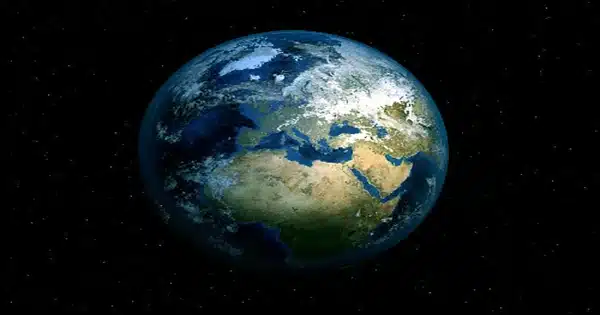A multinational team of scientists, led by Oregon State University researchers, used a fresh 500-year dataset to create a “restorative” roadmap for humanity to escape the worst ecological and societal consequences of climate change.
In addition to establishing a possible new direction for society, the researchers say their “paradigm shifting” strategy can help with climate modeling and discussion by outlining a series of activities that place a strong emphasis on social and economic fairness, as well as environmental sustainability.
Oregon State’s William Ripple, former OSU postdoctoral researcher Christopher Wolf, and collaborators argue that this scenario should be included in climate models alongside the five “shared socioeconomic pathways,” or SSPs, used by the United Nations Intergovernmental Panel on Climate Change.

“We recognize that our proposed scenario may be difficult to implement given current emissions trends, a lack of political will, and widespread social denial, but its merits cannot be honestly debated if it is not included in the suite of options,” said Ripple, distinguished professor of ecology in the OSU College of Forestry.
“We advocate for radical incrementalism, which involves achieving great change in modest, short-term increments. And we’re providing a much-needed contrast to many other climate scenarios that are more in line with the status quo, which isn’t working.”
Ripple and co-authors from the United States, the Netherlands, and Australia describe their healing approach in an article published in Environmental Research Letters. They claim the method is inspired by a one-of-a-kind compilation of Earth system variables that graphically demonstrate how humanity’s resource demands have skyrocketed since 1850, signifying ecological overshoot.
“The supporting data underscore the urgent need for action,” said Wolf, who is now a scientist with Terrestrial Ecosystems Research Associates in Corvallis. “The growth in human population, gross domestic product, and energy consumption, primarily reliant on fossil fuels, has led to an extraordinary surge in greenhouse gas emissions, dramatically altering land use and triggering a massive biodiversity decline.”
The authors point out that present climate change modeling is based on numerous assumptions and elements relating to policy alternatives and social trends. The SSPs were developed by an international team of climate scientists, economists, and energy systems modelers. They are used to calculate greenhouse gas emissions scenarios under various sets of policies that anticipate continuing and strong GDP growth through 2100.
“The SSPs describe plausible developments that in the future would lead to different challenges for climate change mitigation and adaptation,” he said.
“They are based on five storylines that explain various socioeconomic processes, some more sustainable than others. Our scenario focuses on reducing basic resource consumption to a level that keeps environmental constraints within planetary boundaries, while per capita GDP stabilizes over time.
Wolf, Ripple, and associates examined several variables over time, including fossil fuel emissions, human population, GDP, land use, greenhouse gas concentrations, global temperature, vertebrate wildlife species abundance, wealth disparity, and meat production.
According to the authors, Jillian Gregg of Terrestrial Ecosystems Research Associates, Detlef P. van Vuuren of the Netherlands Environmental Assessment Agency, and Manfred Lenzen of the University of Sydney, the data together paint a comprehensive picture of the profound changes that Earth has undergone.
“The income share variable extends back to 1820 and shows how the top 10% have consistently received at least 50% of all income, illustrating global economic inequality over the long term,” he stated.
“The restorative pathway would represent a more equitable and resilient world with a focus on nature preservation as a natural climate solution; societal well-being and quality of life; equality and high levels of education for girls and women, resulting in low fertility rates and higher standards of living; and a rapid transition toward renewable energy.”
Unlike some of the present shared socioeconomic pathways, the restorative pathway does not rely on the development of carbon capture technology, nor does it presume sustained economic growth, as do the SSPs.
“By prioritizing large-scale societal change, our proposed pathway could limit warming much more effectively than pathways that support rising resource consumption by wealthy nations,” Ripple said in a statement. “We want to bend the curves on a variety of planetary vital indicators by addressing climate change, biodiversity loss, and socioeconomic inequity comprehensively. Our work makes a case for how humankind might begin the road of saving the globe from environmental and social issues.”
Ripple, Wolf, and ten other scientists from the United States and around the world released findings in BioScience in October 2023, revealing that the Earth’s vital indicators have deteriorated beyond anything humans have seen before, to the point where life on the planet is threatened.
Ripple is also a co-author of a new BioScience research that tackles climate change and the associated biodiversity catastrophe from a cosmic viewpoint, employing “long-term planetary thinking,” he added.
















